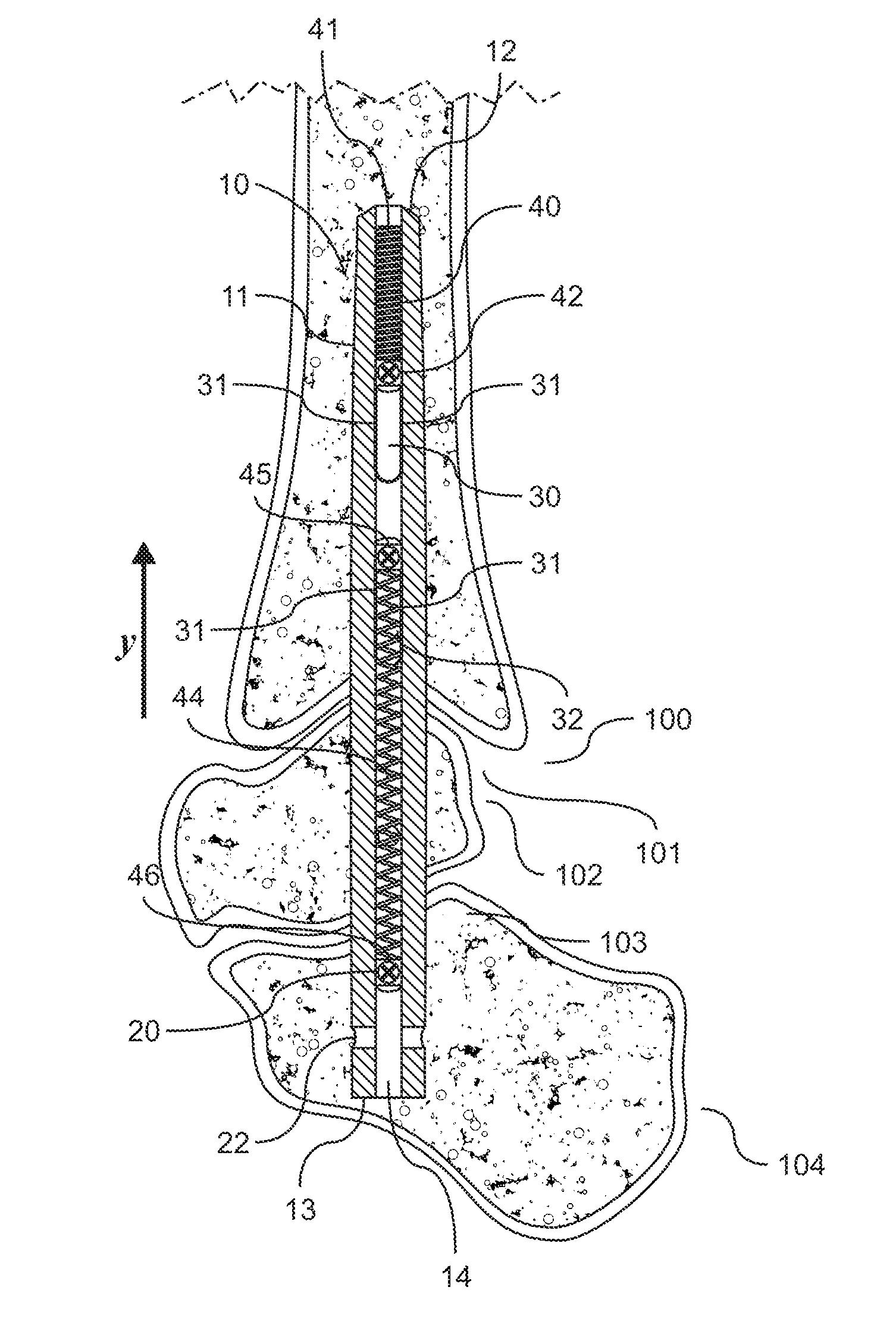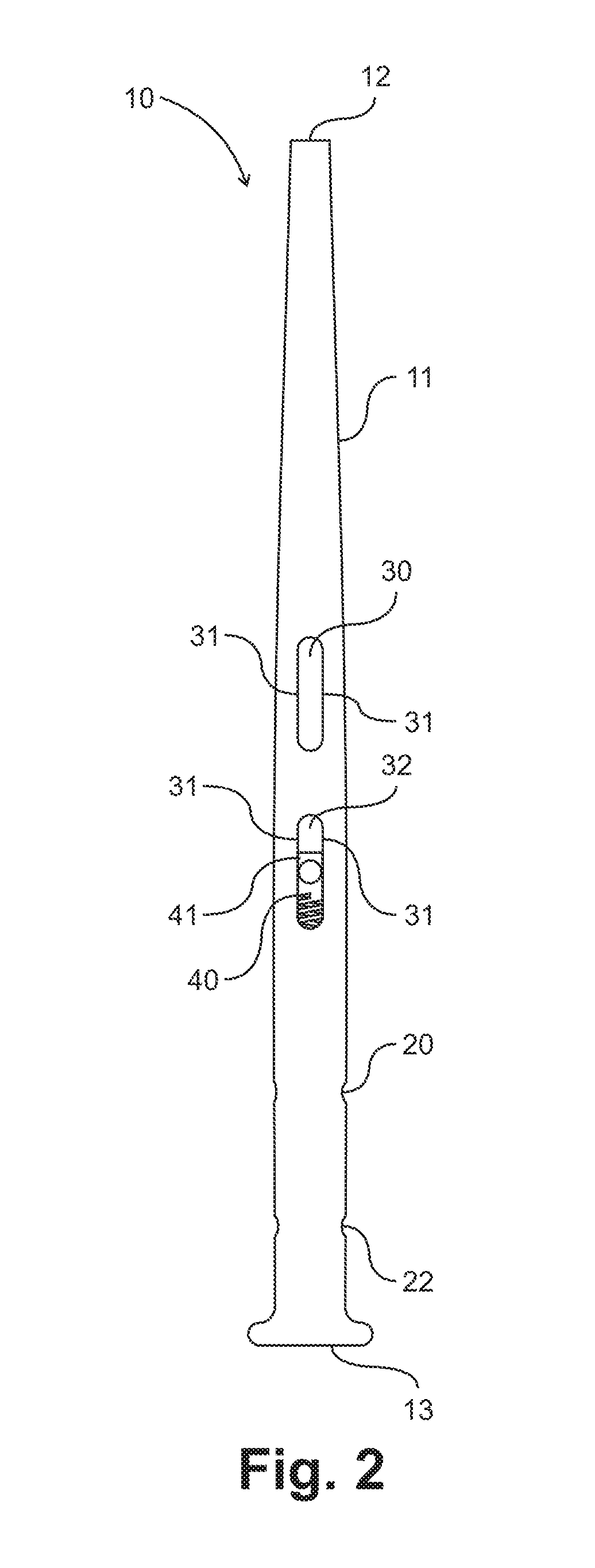Intramedullary nail, system, and method with dynamic compression
a technology of dynamic compression and intramedullary nail, applied in the field of intramedullary nail with dynamic compression, can solve the problems of fracture fragments not maintaining compression across fracture fragments, skeletal function loss, and scar tissue that is not mineralized,
- Summary
- Abstract
- Description
- Claims
- Application Information
AI Technical Summary
Benefits of technology
Problems solved by technology
Method used
Image
Examples
Embodiment Construction
[0049]The present invention overcomes disadvantages of the prior art, as identified and disclosed by the inventor, by providing a cannulated intramedullary nail and steps for its insertion so that continuous dynamic compression is applied across a fusion or fracture site. Continuous dynamic compression is accomplished through the employment of one or more mechanical compression members, such as compression or extension springs or biocompatible elastic or rubber bands, which are loaded into the cannulated canal of the nail itself. The compression mechanism is engaged with transfixion interlocking fasteners such as pins, rods, or screws that are inserted across the nail.
[0050]The detailed description set forth below in connection with the appended drawings is intended to provide example embodiments of the present invention and is not intended to represent the only forms in which the invention may be constructed or utilized. The description sets forth the functions and the sequences of...
PUM
 Login to View More
Login to View More Abstract
Description
Claims
Application Information
 Login to View More
Login to View More - R&D
- Intellectual Property
- Life Sciences
- Materials
- Tech Scout
- Unparalleled Data Quality
- Higher Quality Content
- 60% Fewer Hallucinations
Browse by: Latest US Patents, China's latest patents, Technical Efficacy Thesaurus, Application Domain, Technology Topic, Popular Technical Reports.
© 2025 PatSnap. All rights reserved.Legal|Privacy policy|Modern Slavery Act Transparency Statement|Sitemap|About US| Contact US: help@patsnap.com



